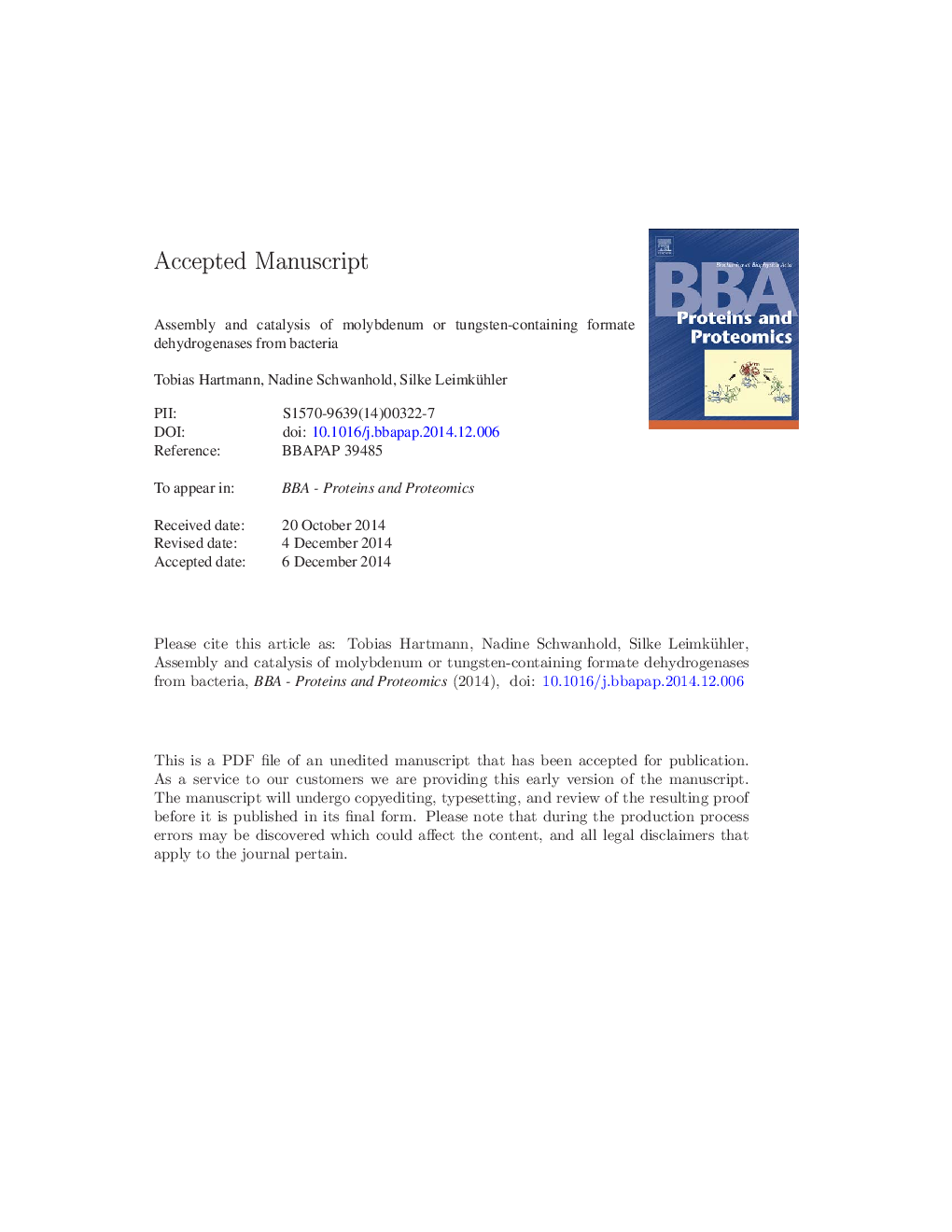| Article ID | Journal | Published Year | Pages | File Type |
|---|---|---|---|---|
| 10537121 | Biochimica et Biophysica Acta (BBA) - Proteins and Proteomics | 2015 | 41 Pages |
Abstract
The global carbon cycle depends on the biological transformations of C1 compounds, which include the reductive incorporation of CO2 into organic molecules (e.g. in photosynthesis and other autotrophic pathways), in addition to the production of CO2 from formate, a reaction that is catalyzed by formate dehydrogenases (FDHs). FDHs catalyze, in general, the oxidation of formate to CO2 and H+. However, selected enzymes were identified to act as CO2 reductases, which are able to reduce CO2 to formate under physiological conditions. This reaction is of interest for the generation of formate as a convenient storage form of H2 for future applications. Cofactor-containing FDHs are found in anaerobic bacteria and archaea, in addition to facultative anaerobic or aerobic bacteria. These enzymes are highly diverse and employ different cofactors such as the molybdenum cofactor (Moco), FeS clusters and flavins, or cytochromes. Some enzymes include tungsten (W) in place of molybdenum (Mo) at the active site. For catalytic activity, a selenocysteine (SeCys) or cysteine (Cys) ligand at the Mo atom in the active site is essential for the reaction. This review will focus on the characterization of Mo- and W-containing FDHs from bacteria, their active site structure, subunit compositions and its proposed catalytic mechanism. We will give an overview on the different mechanisms of substrate conversion available so far, in addition to providing an outlook on bio-applications of FDHs. This article is part of a Special Issue entitled: Cofactor-dependent proteins: evolution, chemical diversity and bio-applications.
Related Topics
Physical Sciences and Engineering
Chemistry
Analytical Chemistry
Authors
Tobias Hartmann, Nadine Schwanhold, Silke Leimkühler,
